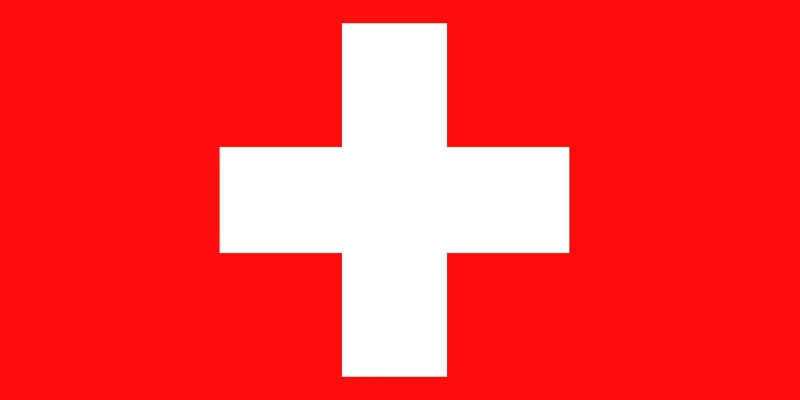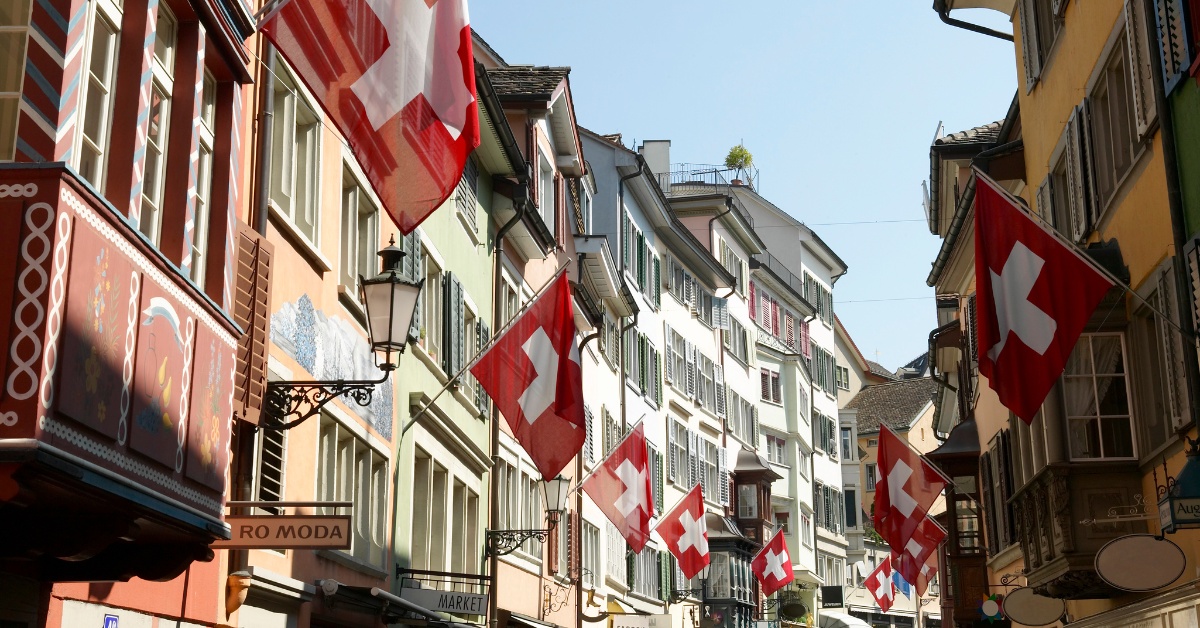Switzerland’s Flag Meaning and History
Every nation proudly waves its flag, a meticulously crafted and adopted symbol at a pivotal moment in its history. These flags tell tales of their country’s evolution, struggles, and the path to freedom. One such symbolic flag is that of Switzerland, which has seen its fair share of historical events, symbolizing the Swiss journey towards liberty.
Origins and History of the Swiss Flag
Switzerland, like many countries, has a rich and layered past. Let’s delve into some critical milestones related to its flag and the moment it was recognized as the official emblem of Switzerland.
While the Swiss flag, as it is recognized today, holds a potent significance in contemporary times, its origins can be traced back to pivotal moments in the nation’s history.
The initial inspiration for the iconic red flag with the white cross can be traced back to the Battle of Laupen in the canton of Bern in 1339. Swiss soldiers took to sewing a white cross onto their chain mail to distinguish themselves from adversaries on this battlefield. As time passed, this emblematic cross became a frequent feature not only on their banners but also on their weapons.
However, the journey of the Swiss flag took a detour during the Helvetic Republic era (1798-1803) under Napoleon Bonaparte’s reign. Switzerland was directed to adopt a tricolored flag uniquely designed in green, red, and yellow shades. This decree marked the inception of Switzerland’s first-ever national flag. But as the Helvetic Republic era ended, so did this version of the flag.
By 1840, the design of the Swiss Confederation’s flag that we’re familiar with today came into existence. In Switzerland, there’s a linguistic preference when referring to the flag. They employ the term “Fahne” instead of “Flagge,” which is used in Germany.
The background color, red, has been a contention among historians. While some speculate it symbolizes the blood of Christ, others believe its roots lie in the Bernese flag prevalent during that era. The distinct square shape of the flag, setting it apart from many other flags worldwide, was inspired by the square military coats of arms during those times.
In a move solidifying its importance and acknowledging its historical significance, 1848 witnessed the red flag with the white cross being enshrined in Switzerland’s constitution. This act sealed its status as the country’s revered national emblem. This symbol has since stood tall, representing Switzerland’s unique identity and values.
The Iconic Red Cross

The humanitarian organization, the Red Cross, was the brainchild of Swiss-born Henry Dunant in 1863. Its symbol is an inversion of the Swiss flag: a red cross against a white backdrop. Given their similarities, it’s no shock they’re often interchanged. Yet, a hint lies in the name, “Red Cross,” describing the design.
What is the meaning of the Swiss Flag?
Switzerland stands out, having avoided war for over 500 years. It declared neutrality in 1815, pledging to prevent global armed disputes. The League of Nations affirmed this status in 1920. Thus, the Swiss flag is a potent icon of tranquility, security, and respect for humanity.
Characteristics of the Swiss Flag
The Swiss flag is instantly recognizable due to its unique and distinct features.
One of the most standout characteristics is its square shape. In this regard, Switzerland shares company only with the Vatican, making these two nations the sole bearers of square flags globally. This distinction sets the Swiss flag apart from the rectangular norm seen in most other countries.
Further emphasizing Switzerland’s commitment to consistency, there’s no distinction between its national flag and coat of arms. Unlike nations that often differentiate between the two, Switzerland steadfastly uses the square red flag adorned with a white cross for both purposes.
The specific shade of red used in the flag is not just any hue. It is designated Pantone 485C, a blend of magenta and yellow, ensuring a consistent and easily identifiable shade. Centrally placed on the flag is the white cross. Precision is evident in its design, too: the arms of the cross are purposefully made one-sixth longer than their breadth.
All these elements together give the Swiss flag its unmistakable appearance and carry a rich history and significance. It also symbolizes pride and recognition for the nation and its people.
Here are some fascinating facts about the Swiss flag:
- Square Shape: The Swiss flag is one of only two square national flags in the world. The other square flag belongs to the Vatican City.
- Pantone Shade: The specific shade of red in the flag is Pantone 485C, a precise blend of magenta and yellow.
- Origin in Battle: The roots of the flag date back to the Battle of Laupen in 1339, when Swiss soldiers sewed a white cross onto their chain mail to differentiate themselves on the battlefield.
- Consistency: Unlike many countries with different national flag designs and coats of arms, Switzerland uses the square red flag with a white cross uniformly.
- Cross Dimensions: The arms of the white cross on the flag are one-sixth longer than they are wide.
- Red Cross Connection: The emblem of the Red Cross, a renowned humanitarian organization, is an inversion of the Swiss flag, showcasing a red cross on a white background. The organization was founded by a Swiss, Henry Dunant, in 1863.
- Napoleon’s Influence: During the Helvetic Republic era (1798-1803), Napoleon Bonaparte introduced a tricolored flag for Switzerland. This green, red, and yellow flag was Switzerland’s first national flag but was short-lived.
- Symbol of Neutrality: Switzerland is known for its long-standing policy of neutrality. In many ways, the flag symbolizes this commitment to peace, security, and respect for all human lives.
- Formal Recognition: The present design of the Swiss flag was solidified in the country’s constitution in 1848.
- Origins of the Red: Historians still debate about the red color’s origin. Some speculate it’s symbolic of the blood of Christ, while others attribute it to the Bernese flag of the time.
- Unique in the Olympics: During events like the Olympic Games, even though the Swiss flag is square, Swiss representatives use a rectangular version to maintain consistency with flags from other nations.
These facts offer a glimpse into the deep-seated history and significance of the Swiss flag, making it not just a national symbol but a testament to the country’s rich legacy and values.
In closing, while the Swiss flag and the Red Cross emblem have their roots in the same soil, they are distinct. The former has a white cross on a red field, while the latter’s design is the reverse. Yet, both are intertwined in Switzerland’s storied past, each holding its unique significance.







